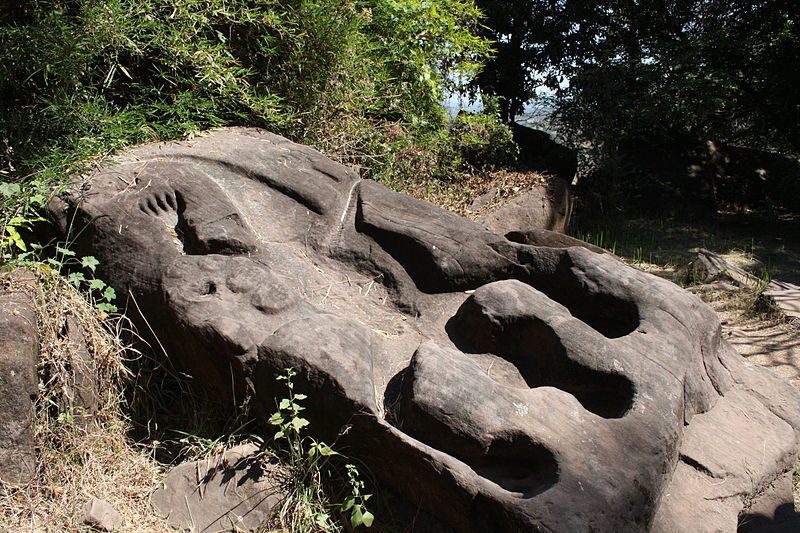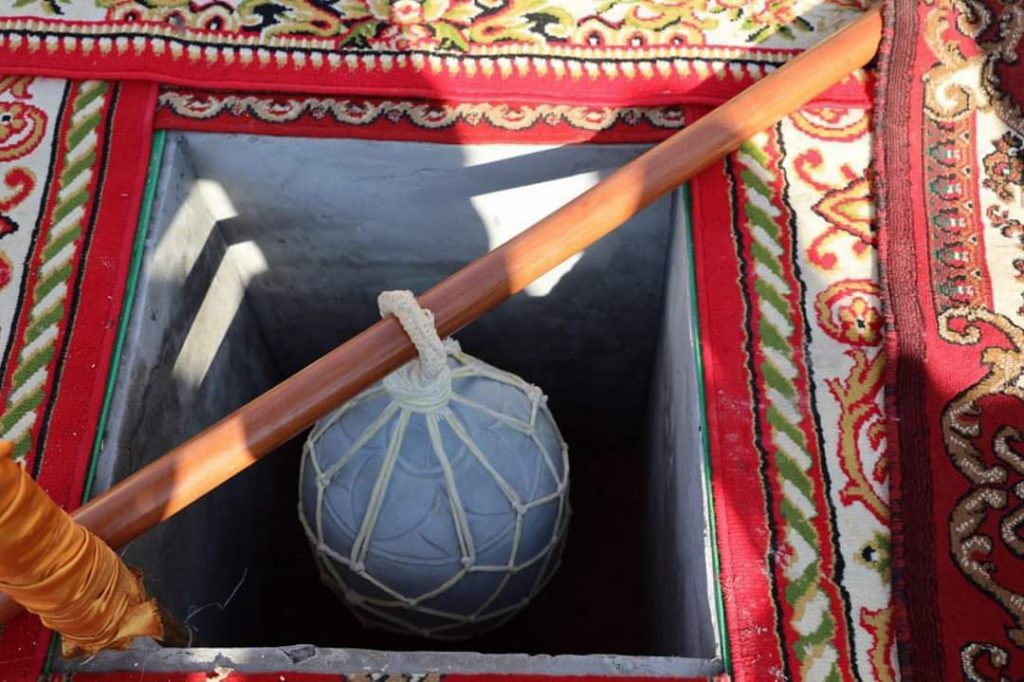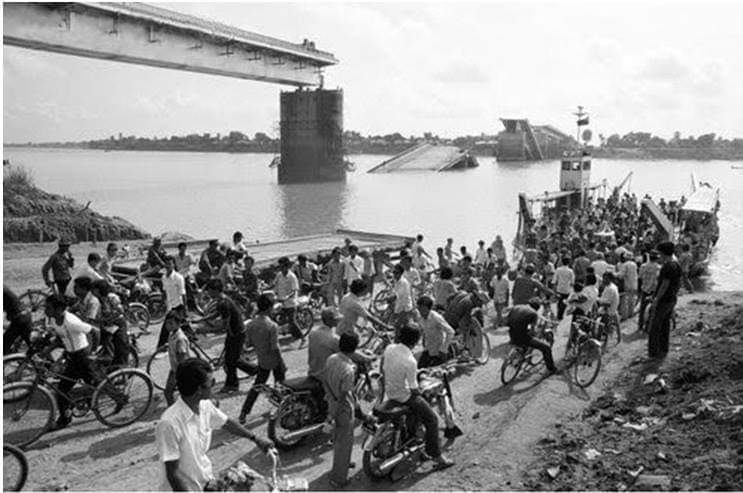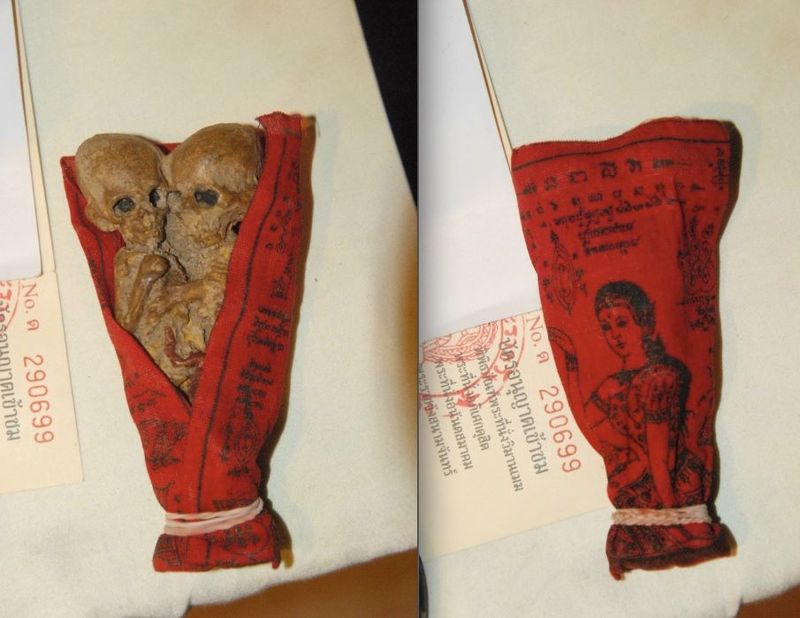The Last Royal Sacrifice
The year is 1877, and for some reason you decided to join a rebel army put together by a minor prince named Siwotha. King Norodom is understandably upset about this, so gathers his own forces, bolstered up by a few French soldiers and a whole load of Francophile Vietnamese, to march on the hill where your small bunch of rebels have hastily built a fort.
Seeing these columns raising the dust in the distance is enough for the yellow-bellied prince to saddle up his elephant and high-tail it out the area with a few of his buddies. The rest of you are left to explain your treacherous choices to an angry royalist army.
To make matters worse, it wasn’t just any old Prey Veng hill that the turncoat prince decided to take over, but Ba Phnom, the Mountain of the Ancestors. This happens to be the cradle of Mon-Khmer civilization and the likely site of the lost capital of Funan- Vyadhapura.
As far as location, location, location goes, this one is great, as it’s also, by choice or coincidence, right next to a shrine dedicated to the ‘protective spirit’ of the White Mother, neak ta Ma Sar. As a Buddhist, you probably don’t realize that this is a reworking of the ancient Hindu goddess of war and protector of the weak, known as Durga Devi Mahisasuramardini. But, you would almost certainly be aware that, despite the Theravadian upgrade, the believers in this cult, (which about includes just about everybody, even the orange robed dharma chanters at the wat), like to offer up the ancient rite of blood sacrifice now and again in order to predict the weather and keep the spirits satisfied.
So, leaderless and outnumbered the decision is made to accept the amnesty offered by the enemy at the gates, but, like most good things in life, there’s a catch. In this case the King demands two prisoners to give the populace a special treat in time for planting season.
Somehow you are volunteered, coerced or forced to be one of them and are faced with two choices. The first is to be guest of honour at a big party with chanting monks, and plenty of revelry, before having your head chopped off to see which way your blood spurts, and giving farmers an insight where the rains might fall on their crops. Then 100 pieces of your flesh are to be skewered on two sharpened sticks and the lesser spirits of nek ta Sap Tha and nek ta Tuol Chhnean, get a double human shish kebab, 50 bits of you, and 50 bits of your comrade, each. Your heads will then be placed on spikes as a seasonal gift to Ma Sar.
Option #2 involves a refusal to take part in the ceremony and the consensual decapitation in the name of communal level crop rotation, but is a guaranteed way to find out what innovative techniques the King’s best torturer has been working on involving white-hot metal and sharpened bamboo.
Not that you would know it as you are led up the hill with your head and hands in wooden stocks, but you and your buddy will be the last men to be honoured in a tradition that goes back 1000 years. After this party, the nation will move towards the 20th century and outsource the severed human head arrangement to not-so-willing buffaloes.

The Crocodile Alter?
500 or so kilometres to the north, in what is now southern Laos, human sacrifice was recorded by Chinese writers in the 6th century History of the Sui chronicles. The writings centered on a site around Wat Phou, which was then a part of the other Pre-Angkorian kingdom of Chenla.
It was said that once a year, when the frangipani petals started falling, the king of Chenla would sit on the main causeway of Wat Phu. The king would pray to the spirits of the mountains and offer rice wine to two girls selected for their beauty. The girls would then be sacrificed to the gods for good fortune in the coming year. If these local legends are to be believed then this somewhat sinister human sized crocodile carving was where the magic happened.

Marking of Monasteries
If having your head cut off and flesh skewered shashlik style as a meal for a hungry spirit, and your blood spatter being some early precursor to the weather channel sounds bad enough, then how’s about being some sort of eternal gate post?
When a monastery is being established or re-established, the shrine hall has to be marked off from the secular world. Eight sacred stones, called seima, which just happen to be around the same shape and size of a human head. Whether these are wholly symbolic, or come from an older and darker Brahmanic tradition is up for question.
These seima are buried in pits at the eight compass points and half-points (north, south, etc). A ninth stone is buried at the centre of this space, directly in front of the main Buddha image – this one represents the god Indra, king of Meru and the gods (because good Buddhists like to hedge their bets and often believe in Hindu gods).….
In fact, only last year a similar event took place at the Golden Lions Circle in Sihanoukville, luckily for the town’s heads, stone seima were also used.

Ghostly Guards
Taking one for the team in the name of religion is one thing, but being an ethereal security guard is another. It is said that the idea of ‘construction sacrifice’ was once a popular belief across much of Southeast Asia. The idea seems simple on paper; any new building or bridge needs a protective spirit to watch over it, and keep malevolent ghosts and general bad luck away. To get one, you need a recently killed corpse buried underneath the foundations and forever tied to the site.
The ghosts of children were said to be preferred, presumably as there was less chance of them going rogue in the afterlife.
Ask any Cambodian over the age of about 30 whether their childhood nightmares featured the bro mat bro mong. Named after a local species of hawk that swoops down on small chickens, these were said to be the local version of child-snatchers mixed with a part-magic bogeyman. If the legends are to be believed, the bro mat bro mong (sometimes spelled promat prormorng) would wander the countryside and city streets looking for lost and wayward children to steal and sell for all manner of nefarious activities.

These rumours reached a peak in the 1970’s when it was said that many missing children had been buried underneath the Japanese Friendship Bridge in Phnom Penh, so their spirits would protect the structure from Khmer Rouge attacks. In reality, it much more likely that they were kidnapped by both sides to fight, or be used as porters, in the raging civil war. If the story does have any basis in facts, the ghosts didn’t do their job, as the bridge was destroyed by a team of Viet Cong suicide bombers in 1972.

Do the bro mat bro mong still exist in the shadows? Have the superstitious who have the contacts and access to enough money given up on the practice, or may there still be secrets forever hidden under the concrete of a condo near you?
Womb Raiders
I once made the acquaintance of some missionaries from Alabama, the sort who blame Satan for a rain shower when the washings out, or a cut while shaving, then pray and praise Jesus when the sun comes out and for inventing Band-Aids.
One thing these pious bunch love more than anything else is protecting the ‘rights’ of the unborn; far more than the ‘thoughts and prayers’ offered out to the actual-born, who, after managing to blow out a few candles were sent to heaven in this week’s ‘Merca’s Next Mass-Shooting.
So much do these wholesome zealots hate anything to do with ‘pro-choice’ they have even decided to ignore the misogynistic, womanizing, grab-‘em-by-the-pussy past of President Trump, now he has changed his views on the matter in a totally-not-a-cynical vote grabbing ploy to bolster support from other right-wing Jesus freaks.
Personally, I’m as liberal as the next man when it comes to making personal health decisions, but there is something more than a little disturbing about the using the unborn from the womb as a sort of magic talisman. The tradition of Kumara in Pali, Kuman Thong in Thai and koen krot in Khmer is illegal, but still practiced.
This necromancy is performed thus: first a fetus must be removed from the mother. The woman probably dies, but that part is collateral damage and irrelevant. Special magic words and incantations are spoken over the unborn, in order for its owner to ‘adopt’ the spirit inside.
The fetus is then roasted or smoked over a fire to dry out. In some cases, for extra magic, the leathery fetus is then soaked in human oil, rendered from fat taken from a dead child’s chin, or of a person who died a violent death.
In Cambodia, these dried dead-lucky charms were wrapped in cloth with more spells written on it and kept on the owner’s body. They were especially popular among soldiers, who believed their koen krot would give them special protection and advice on how to avoid dying in battle.

The custom was so well known that the queen of the Golden Age crooners, Ros Sereysothea sang the lamentful tune of a pregnant woman begging her soldier husband to kill her and remove the baby from inside her, so that he would stay safe during a battle.
Notorious gangster and kidnapper Som Nara, known as Rasmach, who was finally shot dead by police in 1999, kept a pair of koen krot,a boy and a girl, and was convinced that the foetal phantoms would make him invisible and invincible.
A horror movie, loosely based on Rasmach “The Unborn Baby.” (រឿង កូនក្រក – ឈុតខ្លី) was released in Khmer cinemas in 2018.
Dine, Young Cannibals
Cannibalism has also been a mainstay of magic tradition going back centuries. In the early 1500’s a Chinese envoy who visited Cambodia claimed that the Angkorian Empire would offer “thousands and thousands” of human gallbladders, as a gift to the king of Champa. Gallbladders were thought to have medicinal qualities, while the liver and hearts were believed to give the diner the strength and courage once possessed by their former owners.
The practice continued way into the 20th century, as it even did in a medical form in Britain.
A well-documented case was that of Lon Nil, the younger brother of Lon Nol, who was killed by an angry mob in Kompong Cham province in 1970 after Sihanouk denounced his brother’s coup. Lon Nil’s liver was fried and served up at a nearby Chinese restaurant.
Both government and communist forces during the civil war, and the Democratic Kampuchea regime which followed, were widely reported to have indulged in the dining of human hearts and livers.
How much this was due to ancient customs and traditions, and how much was a ‘drink from the skulls of mine enemies’ style bravado of vanquishers is debatable. Maybe flame grilled liver is actually quite tasty and there’s a bit of the anthropophagist in all of us.
But let’s hope, as we are 1/5 way through the 21st century, that we can have, to quote Rocket Man Mr. Reg Dwight himself, and, at least of the human variety, have ‘No sacrifice at all’.
Submitted by History Bob (views expressed in this article are the author’s own and do not necessarily represent those of this website)
SOURCES USED:
ROYALLY SPONSORED HUMAN SACRIFICES IN NINETEENTH CENTURY CAMBODIA:( the cult of nak tii Me Sa Mahisiisuramardini at Ba Phnom) by DP Chandler
Philip J Coggan, Atlas Obscura, Cambodia Daily, Phnom Penh Post, Khmer Times, Bangkok Post

Interesting piece, sadly like many writing about history who are of a liberal leaning you just could not resist taking a shot at Christians, President Trump and conservatives in general. History is about being objective when you write about it, leave your haters and bias at the door as it ruins the whole experience.
Any chance of a link to the song in queston (the one by Ros Sereysothea)?